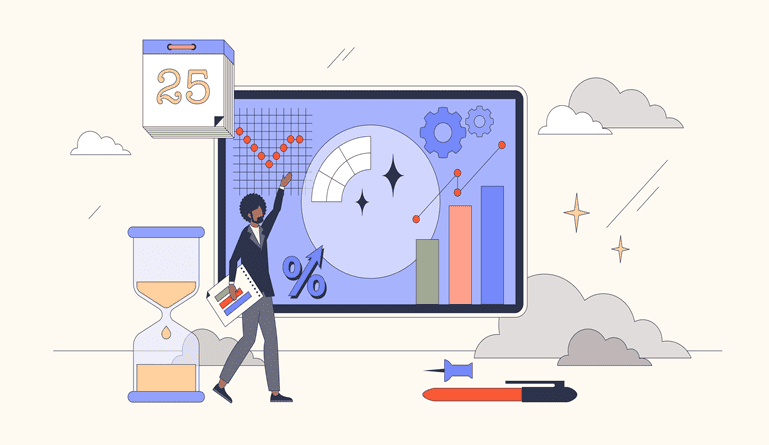Guest Contribution by Erika Venckutė at OxyLabs
The internet and the data it produces is growing exponentially, leveraging opportunities for market researchers across all industry sectors and verticals. Data-driven marketing strategies are what give organizations a competitive advantage, and data extraction techniques are the weapons of choice.
Put simply: when it comes to market research, more data means a stronger competitive advantage. While compiled information in market research reports will always be useful, a recent report by Forrester Research, Inc. confirms that businesses that directly mine data are at a significant advantage, growing at more than 30% annually and on track to earn $1.8 trillion by 2021.
Similar research by McKinsey confirms further that organizations leveraging customer data are outperforming their industry peers by 85% in sales growth, and more than 25% in gross margin.
Learn more in-depth about data collection for market research on OxyLabs.
Data-Driven Market Research Solutions
There’s no doubt about it: data is really important. But as the internet grows, so does the clutter. Traditional market research methods can be time-consuming, and sifting through data can be tedious and expensive.
That’s where web scraping comes in.
Anonymous web scraping techniques using proxies are the answer to collecting the relevant data needed to zero in on your target market with precision. This article is going to get you up to speed on how web scraping works, how you can use it, and the most effective way to get the market research data you need – efficiently and anonymously.
Web Scraping Basics for Market Research
To start, web scraping is a process used to extract data from a website.
An easy example is a page full of clothing with prices, colors, and sizes. Scraping (or “harvesting”) that data could be as simple as manually loading that information into a spreadsheet via copying and pasting. It could also be as complex as using a custom-programmed application that automatically downloads hundreds (or thousands) of pages of that data and organizing it for you.
Advanced Web scraping revolutionizes market research because it can aggregate, organize, and process large amounts of data at high speeds, giving marketers keen insights on large populations.
Strategies for Market Research
Traditional market research methods include time-intensive and expensive strategies like surveys, focus groups, interviews, and field trials. Web scraping leverages all the existing data currently found on the internet, enabling marketers to segment and analyze target markets more efficiently.
Some tactics for market research include:
-
Marketing and Sales
Web scraping can help with generating leads, analyzing people’s interests, and extracting ratings from various platforms for monitoring consumer sentiment.
-
Pricing Analysis
The web’s virtually unending stream of products from all over the world can make pricing analysis tricky. Web scraping can help companies extract competitor’s prices in addition to monitoring any of their activities relating to discounts, new product arrivals, and other competitive product information.
-
Brand Management
The transparent nature of the web means that negative news travels fast. Web scraping can extract information about product mentions (including ratings) that gives companies insight about any negativity early on, so solutions can be deployed before the brand is damaged.
How to Web Scrape
Web scraping techniques vary greatly in effectiveness, coding complexity, cost, and maintenance.
As mentioned above, the most simple technique is manual copying and pasting while the most advanced use a wide variety of programming-based approaches that include: text-pattern matching, database extraction, using the DOM (Document Object Model), or the creation of “bots”.
Other methods of web scraping involve using software tools that attempt to recognize the data structure of a page, provide an automated recording interface (negating the need for manually written code), employ scripting functions that extract and transform content or using functions that extract data directly from an API.
Legality of Web Scraping
Web scraping laws vary across the world, and it is against the terms of use on some websites.
To avoid the scraping of data, website administrators use various techniques to stop or slow down bots. These include:
- Blocking IP addresses
- Disabling web service APIs
- Blocking bots in the robots.txt file
- Using CAPTCHA challenges
- Commercial anti-scraping/anti-bot services
- Using CSS sprites (those challenges where you click on objects like traffic lights or bicycles)
Using Proxies for Market Research
While there’s nothing stopping a market researcher from copying and pasting data into a spreadsheet, web scraping data on any relevant scale from large sites require the use of a proxy to avoid being banned or blocked.
Specifically, a proxy is a third party server from a company that allows a user to route their request through their servers so the website receiving the request does not see the user’s real address.
This allows web scrapers to mine website data without the risk of getting banned or blocked, in addition to hiding their specific geographical location or type of device.
Proxy Options for Market Research
There are 3 main proxy-type options, each suited for a specific purpose:
-
Datacenter IPs
Datacenter IPs are the most common type of proxy IP that is housed in a data center. Since they are relatively cheap, they are one of the most popular web crawling solutions for many data scraping service providers.
-
Residential IPs
Residential IPs hypothetically belong to private residences. They are more difficult to get and more expensive, however, some web scrapers prefer them because they are less likely to get blocked.
-
Mobile IPs
Mobile IPs belong to private mobile devices and use the owner’s GSM network. They are extremely expensive, difficult to obtain, and are rarely used as an option for data scraping.
Final Thoughts
Web scraping for market research is the ultimate tool for digital marketers and internet advertisers, however, attempts to harvest large amounts of data comes with some challenges. Proxies are an effective solution to many of the roadblocks employed by site administrators, enabling web scraping applications to collect the data required for precision-driven marketing strategies.







